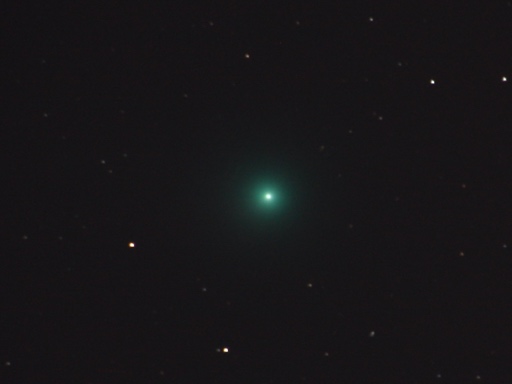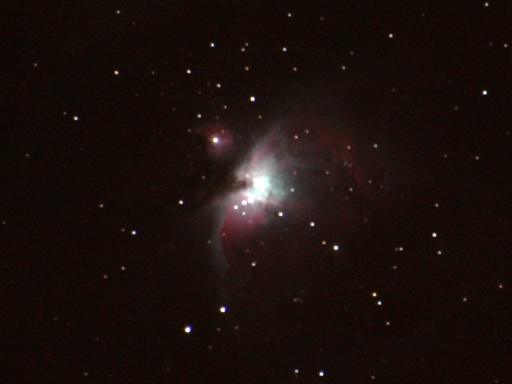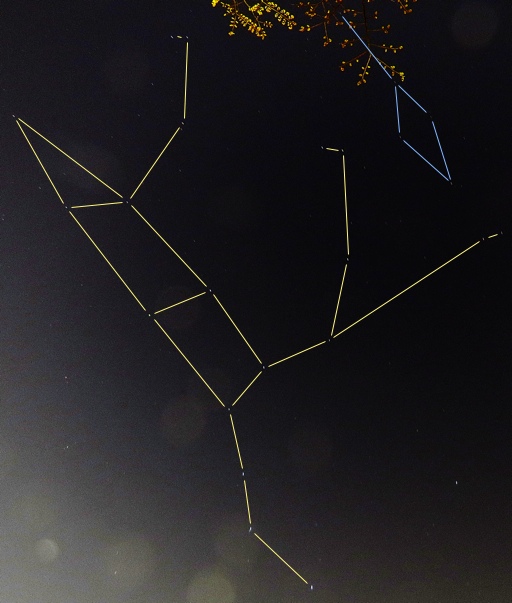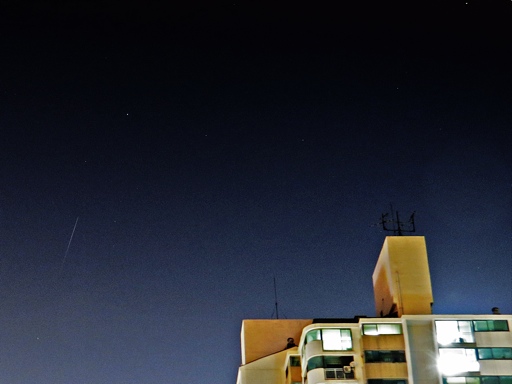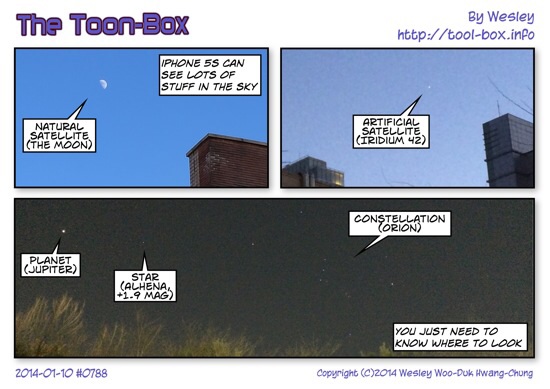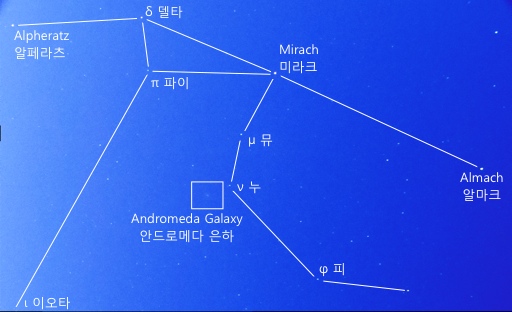Comet C/2014 Q2 Lovejoy & Orion Nebula
Posted by Wesley onSince my last observation of the Comet C/2014 Q2 Lovejoy, I waited for the sky to clear up again so that I can try shooting with a star tracker (iOptron SkyTracker) installed. The opportunity came on the night of January 8. Annoyingly, all the attempts to take long exposure photos failed. I first thought the tracker may be faulty, but later I realized that the image stabilization on the camera lens was negating the tracker's movement.
I vowed to not make the same mistake again, and two days later, I went out to take photos of the comet once more. The southern sky was dark enough to let me barely see the comet with my naked eyes, so my hopes were up. And indeed, I finally got the results I wanted - much improved photos of the comet using the 30-second exposure (longest possible on Canon 450D other than bulb mode) setting. The green glow was now evident, and the center of the comet was shining brightly.
For the reference, the comet had moved to near the constellation of Taurus - the large version of the photo shows the magnitude 5 star 40 Tauri on the far upper left. Also, under the camera settings I used, the darkest stars were around magnitude 12, which is the most sensitive I've gotten out of my astrophotography attempts so far.
After taking the photos of the comet, I felt that it would be nice to point the camera at another object since the tracking setup was already in place. As the sky at my location was especially dark in the east and the south, I decided to take a look at the Orion Nebula inside the Orion constellation, which was in the east, going south.
Alas, due to being out for more than an hour in the below-freezing coldness, the infinity focus of the lens wasn't working quite right anymore and the fog on the lens was getting bad. So I took some measures to mitigate these issues somewhat and was able to salvage several shots before heading home. Luckily, those shots came out looking fine.
Device: Canon EOS 450D + Tamron 18-270mm Di II VC PZD
Settings: 432mm - ISO 800 - 30s - f/6.3
Filters: None
Location: Naju, Korea
[Comet]
Time: 2015-01-10 21:39 KST (21:25-21:52)
12 photos stacked with RegiStax 6.1.0.8
[Nebula]
Time: 2015-01-10 22:26 KST (22:07-22:31)
7 photos stacked with RegiStax 6.1.0.8
Defined tags for this entry: astronomy, C/2014 Q2 Lovejoy, Canon EOS 450D, comet, constellation, iOptron SkyTracker, nebula, Orion, star, Taurus
